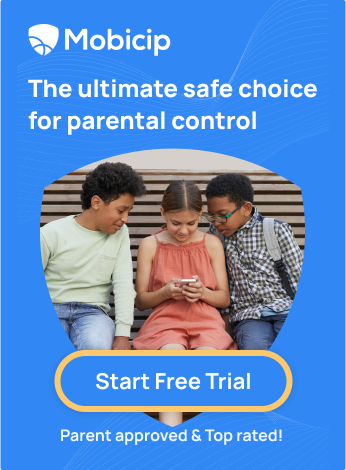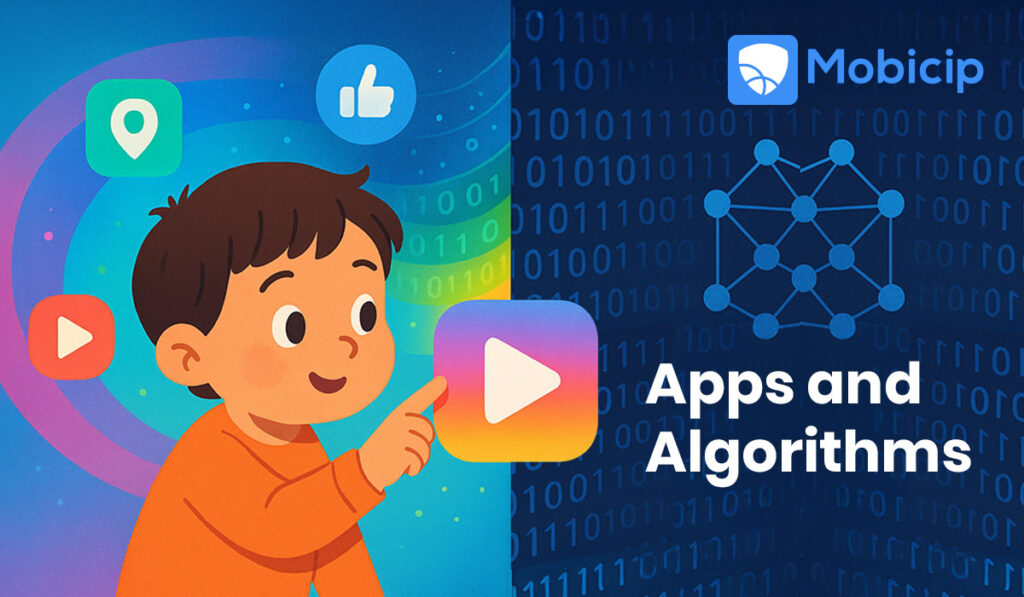Digital Footprints Don’t Fade: What Your Child Is Leaving Behind
“Lives of great men all remind us
We can make our lives sublime,
And, departing, leave behind us
Footprints on the sands of time.”
— Henry Wadsworth Longfellow, A Psalm of Life.
Longfellow probably didn’t have TikTok, Snapchat, or Roblox in mind when he wrote that. Today, those “footprints on the sands of time” might just be your kid’s latest meme, comment, or selfie, floating somewhere in the digital universe. Funnily enough, both sand and computer chips are made of silicon. So those digital footprints? They’re permanently etched in tiny grains of techy sand.
But seriously, digital footprints matter because everything kids post, like, or search online shapes their future. Even when content disappears from social feeds, it might still live on in screenshots, cached pages, data broker archives, or worse, in the darker alleys of the internet. Once something is online, it can be surprisingly hard to truly erase.
That’s why parents can’t afford to sit this one out. We must be aware of what our children are leaving behind online—and how it could impact their safety and future. Fortunately, Mobicip makes monitoring, guiding, and protecting kids easier in this ever-connected world.

What are Digital Footprints?
A digital footprint is like glitter—once it’s out there, it sticks everywhere. It is the trail of data we leave behind every time we use the internet. For kids, this can start early and build up fast.
There are two kinds of footprints: active and passive.
- An active footprint is anything your child knowingly shares — like a TikTok video, a gaming avatar, or a public comment on a YouTube video.
- A passive footprint, on the other hand, is created behind the scenes —through browser history, app permissions, or location data collected quietly in the background.
Platforms that kids frequent—especially online games and social media—are ripe repositories of digital footprints. Even something as simple as signing up for a new game or granting an app access to the microphone can leave a lasting trace. And while some of these data trails might seem invisible, they’re often surprisingly public. And permanent.
Why Digital Footprints Matter: Risks and Consequences
Kids might think they’re just sharing a funny meme or setting up a cool gamer tag—but those little clicks can have big consequences. A digital footprint isn’t just a techy term; it’s a living, breathing online record that can shape your child’s future in ways they don’t expect.
College & Career Impact
Yes, college admissions officers and employers do Google people. And what they find can make a difference.
- That edgy tweet from middle school? Not so edgy at 17.
- Inappropriate photos, offensive jokes, or public arguments may hurt your child’s credibility.
- Even a seemingly harmless online persona can send unintended messages to scholarship committees or recruiters.
Bottom line: Digital history is part of the application process now. Like GPA, but with emojis.
Privacy and Security Risks
Some digital traces aren’t just embarrassing—they’re dangerous.
- Oversharing birth dates, school names, or locations can lead to identity theft.
- Posting too many details can open doors for doxxing (when private info is leaked online).
- Creepy strangers with too much access.
Teaching kids to keep personal info private is crucial—and so is reviewing app permissions regularly.
Online Reputation & Mental Health
Social media clout might feel good today, but it can come at a cost.
- Posts can be twisted or taken out of context.
- Screenshots live forever, even after “delete.”
- Online bullying and comparison culture can take a toll on your child’s confidence and self-esteem.
When a digital misstep spirals into teasing, exclusion, or viral drama, the emotional fallout can be real. A healthy online presence helps protect not just reputation, but peace of mind too.
Where Kids Leave Digital Footprints
From scrolling short videos to building Minecraft empires, children are constantly dropping digital breadcrumbs across the internet. Some of the most common places they leave footprints include:
Social Media Platforms
TikTok dances, Instagram stories, and disappearing Snapchats may seem fleeting, but screenshots and third-party tools can preserve them permanently.
Messaging Apps
Apps like WhatsApp and Discord aren’t just for chatting—they’re packed with group threads, shared files, voice messages, and even live streams that contribute to a child’s digital trail.
Online Games
Platforms like Roblox, Fortnite, and Minecraft are more than games—they’re entire social ecosystems. Usernames, avatars, in-game chat, friend requests, and forums can all leave lasting traces.
Search Engines & Video Platforms
Google searches, YouTube watch history, and even voice assistant interactions (hello, Alexa!) are all recorded and analyzed, often building a data profile in the background.
And let’s not forget app permissions, location sharing, and autofill features that quietly build passive footprints kids don’t even realize they’re leaving.
Real-Life Examples: The Footprints That Came Back
Digital footprints aren’t just about your child—they can ripple out and impact futures, reputations, and even families. Here are some eye-opening stories based on real events (names have been changed to protect privacy) that show why what’s online really sticks.
Lost Internship Opportunity Due to Digital Footprints
Jamie was thrilled to land an internship at a major space agency. But excitement turned to disappointment when she posted a tweet using the agency’s hashtag—something careless and controversial. Agency officials saw it and quickly withdrew the offer. Nearly 70% of businesses have rejected a job candidate because of their social media content.
Reputation Damage
Sophia was devastated when a fake Twitter account was created using her name and photo, spreading hateful messages she never posted. The fake account gained traction for months, threatening her college hopes – 40% of College Admission Officers look at social media profiles of prospective students . With expert help, the fake account was removed, and Sophia rebuilt her online presence to reflect her true character and achievements. She eventually got accepted to her dream school. This story shows that while digital damage is serious, reputation management can help turn things around.
Insurance Issues
When Michael’s family submitted a life insurance claim after his unexpected death, the company found evidence online of his extreme hobby—heli-skiing—which he had denied on his policy application. The insurer rescinded the claim, leaving the family in a tough spot. This case is a stark reminder that insurance companies also use online data to verify claims, and misleading or incomplete digital footprints can cost real money.
Impact of Damaging Digital Footprints on Family
Emily’s boastful tweets about a run-in with the law went viral, not just damaging her reputation but also bringing unwanted media attention to her entire family. Years later, the incident still appears prominently in search results linked to her name. Negative online content can affect loved ones who share your name or identity, creating embarrassment or challenges for them too.
What Parents Can Do
Guiding your child to build a safe and positive digital footprint is an ongoing journey. Here are practical, actionable steps parents can take to protect their kids while encouraging responsible online behavior.
Start Conversations about Digital Footprints Early
Begin talking about digital footprints as soon as your child starts using devices. Explain that what they post online stays around longer than they might think. Use everyday moments to discuss examples from news or shows to make it relatable.
Teach Privacy Settings
Privacy settings are your child’s first line of defense online. Walk them through setting up profiles on social media, apps, and games with strong privacy controls. Show them how to limit who can see their posts and personal info. Regularly review these settings together because platforms often update their policies. Teaching this habit helps kids take ownership of their online safety.
Encourage Kids to Pause Before Posting
Impulse posting can lead to regrets. Encourage your child to pause and think about how a post or comment might be perceived by others — including schools, colleges, or future employers. Remind them that deleting something doesn’t always erase it from the internet. Building this thoughtful habit early helps prevent digital mistakes that can have long-lasting consequences.
Introduce the T.H.I.N.K. framework to help kids pause before posting:
- Is it True?
- Is it Helpful?
- Is it Inspiring?
- Is it Necessary?
- Is it Kind?
This simple checklist encourages thoughtful communication and builds trust, so kids feel comfortable asking questions or sharing concerns about their online activities.
Set Screen Time and Content Filters
Balancing screen time helps reduce exposure to inappropriate content and excessive social media use. Establish clear rules for how long and when your child can go online, and use built-in device features or apps to enforce limits. Content filters block harmful or unsuitable websites and apps, creating a safer browsing experience. Consistent boundaries teach kids healthy digital habits. This is where tools lke Mobicip can help.
Building Positive Digital Footprints
Footprints are not bad. Positive digital footprints are the thoughtful, respectful, and authentic traces your child leaves online—posts, comments, shared projects, or even helpful reviews—that reflect their true character and values. These footprints can showcase creativity, kindness, and responsibility, creating a digital resume that opens doors rather than closing them.
To build positive footprints, encourage your child to:
- Share achievements, like school projects or hobbies
- Post uplifting and supportive messages
- Engage respectfully in online discussions
- Highlight acts of kindness or community involvement
These positive traces help children stand out to colleges, employers, and peers as trustworthy and mature individuals. Over time, a strong positive footprint acts like a digital reputation, providing your child with a safety net that can balance out any accidental missteps and boost their confidence in navigating the online world. Teaching kids to build these footprints early equips them with lifelong digital skills and a meaningful legacy they can be proud of.
Use Mobicip to Help Kids Build Positive Digital Footprints
Mobicip gives parents smart tools to guide kids toward safer, more positive online behavior—helping them build a constructive digital footprint from day one. Here’s how some key features support this goal:
- Screen Time Limits: By setting healthy boundaries on daily device use, Mobicip helps kids balance online activities with offline time, reducing impulsive or careless posting.
- Social Media Monitoring: Parents get insights into what kids are sharing and viewing on platforms like Instagram and TikTok, enabling timely conversations about responsible sharing and privacy.
- YouTube & Browsing History Reports: Understanding what videos and websites children visit reveals their interests and potential risks, allowing parents to encourage positive, educational content.
- Real-Time Alerts: Instant notifications about exposure to inappropriate or harmful content empower parents to step in quickly, guiding kids toward better choices before digital mistakes become permanent.
- Content Filtering: Blocks access to harmful or age-inappropriate sites and apps, creating a safer online environment that encourages kids to engage with positive and safe content.
To strengthen family commitment to healthy tech use, consider creating a family tech agreement using Mobicip’s digital wellness tools. This encourages shared responsibility and clear expectations around online behavior, helping children understand and actively shape their digital footprint.

Conclusion
Unlike the ephemeral marks in sand that can be washed away by water or even a gentle breeze, digital footprints accumulate, telling a story that can either open doors or shut them. It is important to teach our kids not just to avoid pitfalls but to craft a positive, intentional online identity. This goes beyond monitoring and rules—it’s about fostering digital wisdom, empathy, and resilience. When parents and children work together, equipped with tools like Mobicip and frameworks like T.H.I.N.K., they don’t just protect—they create. They shape a digital legacy where kindness, thoughtfulness, and authenticity shine brighter than any viral moment. In this way, our children’s footprints can indeed become lasting beacons—guiding them through the challenges and opportunities of an interconnected future, and inspiring others long after the screen goes dark.
FAQ
What are Digital Footprints?
A digital footprint is the trail of information kids leave behind when they use the internet. This includes social media posts, messages, online gaming profiles, search history, and any content they create or interact with online. It can be active (things they post) or passive (data collected without them realizing, like location or browsing habits).
Can you erase your child’s digital footprint?
Completely erasing a digital footprint is nearly impossible because information can be copied, shared, or stored on servers and archives. However, you can manage it by deleting unwanted content, adjusting privacy settings, and monitoring activity regularly to limit what remains visible or accessible.
How does Mobicip help protect kids online?
Mobicip helps by monitoring your child’s online activity across apps and websites, setting screen time limits, filtering inappropriate content, and sending real-time alerts about risky behavior. It also provides reports on social media, YouTube, and browsing habits, empowering parents to guide kids toward safer and smarter digital choices.
What apps leave a digital footprint?
Almost every app your child uses leaves some digital footprint. Social media platforms like TikTok, Instagram, and Snapchat, messaging apps such as WhatsApp and Discord, online games like Roblox and Fortnite, and even browsers and video apps like YouTube all contribute to your child’s digital trail.





